AMC DH9
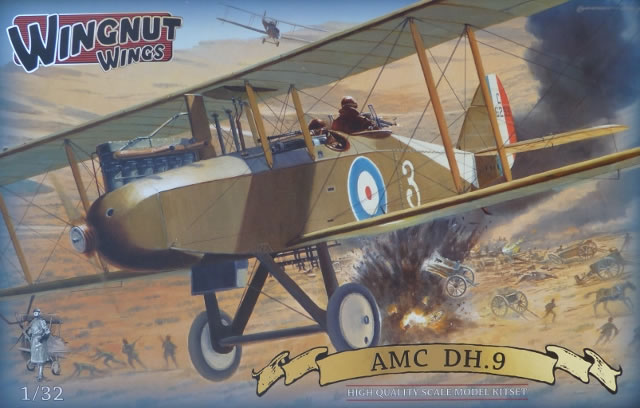
Wingnut Wings, 1/32 scale
| S u m m a r y |
Catalogue Number: |
Wingnut Wings Kit No. 32035 - AMC DH9 |
Scale: |
1/32 |
Contents and Media: |
Eleven sprues of injection moulded grey plastic parts; one sprue of clear plastic; one fret of photo-etch metal detail parts; markings for five aircraft |
Price: |
USD$99.00 with free shipping worldwide, available online from Wingnut Wings' website. |
Review Type: |
First Look |
Advantages: |
Cleverly engineered for ease of assembly; outstanding representation of the surface detail; crisp clean mouldings; comprehensive decal sheet in perfect register with minimal carrier film; intelligent use of photo-etched parts, and an instruction booklet that doubles as reference material.. |
Disadvantages: |
|
Conclusion: |
British two-seaters get another run from Wingnut Wings, and this time it’s the DH.9 that takes centre stage. Having previously released the DH.9a, modellers were expecting this one sooner or later. Clever engineering ensures that the kit assembles easily and it does so without compromising detail. It’s a quality product throughout and a worthy addition to the Wingnut Wings range. |
Reviewed by Rob Baumgartner

HyperScale is proudly supported by Squadron
The AMC DH.9 was built as a bomber to replace the very successful DH.4.
A new source of power was needed due to the demand on the 275hp V12 Rolls Royce engine. The choice was the Siddeley-Deasy “Puma” which proved to be unreliable and never came close to its rated output of 300hp.
As both aircraft and engine were already in mass production, it was decided to continue equipping British bomber squadrons with the flawed design. The reasoning was that it was better to have something, than having nothing at all.
Many of the issues were eventually sorted out during the production run and the aircraft soldiered on until the Armistice and beyond.
The box is crammed with 11 sprues of plastic, a fret of photo etched parts, 2 decal sheets, and a 26 page instruction book. The latter is a hallmark of this company’s releases and provides the modeller with a welcome source of reference material. It contains numerous period photographs, as well as a number of close-ups from restored examples around the world.
Construction starts with the interior and depending on the option chosen, can consist of over 50 parts. Sensibly, the framework running down each side of the fuselage is broken down into 2 parts. This allows more detail to be incorporated into each section and fewer potential fit problems for the builder. Along with the floorboards and assorted bulkheads, it all fits together perfectly into a strong boxlike structure.
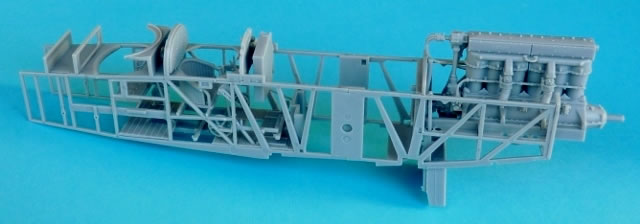
Various fittings can now be added to each “office”, including the camera, optional Stirling wireless set, tailplane and radiator adjusting wheels, grease pump for the synchronizing mechanism, and Gledhill bomb control lever. Items present in both the pilot and observer positions are the control columns, rudder bars, seats, compasses and throttles.
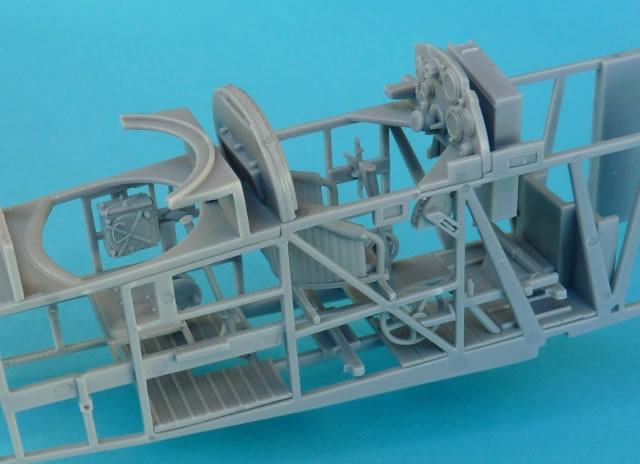
Lap belts are courtesy of the photo etched parts and 11 decals are reserved for the instrument panel. The p-e fret also contains parts for the scarf ring, which is an ideal choice of material to replicate the toothed elevation mechanism. Other items in this medium take care of the Vickers machine gun detail, as well as the fuselage holes for the carburettor intakes.

The 230hp Siddeley-Deasy “Puma” engine is a gem. It consists of 16 parts, many of which will need care during the clean-up process. There was a potential fit issue however. One cylinder emanating from the crankcase was higher than the others. Some judicious filing quickly brought it to the same level as the others.
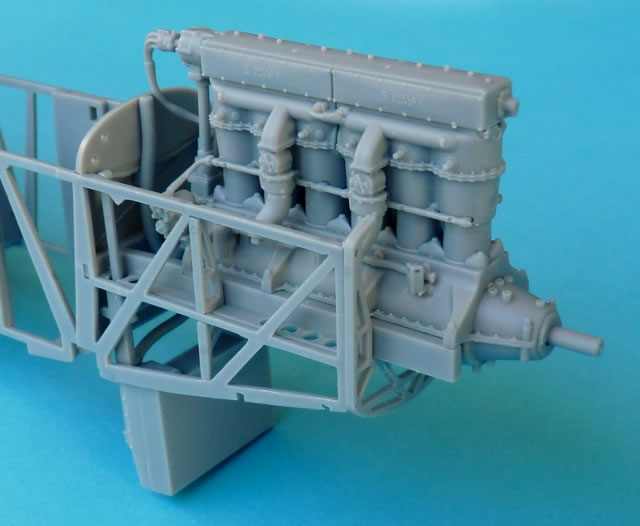
The engine bay is also the recipient of the supplementary oil tank, radiator, and throttle linkage. Despite the multiple parts that encase these assemblies, there were no problems with the fit. To the credit of the designer, all the critical parts in these kits are keyed so that they can only be assembled in one way.
The lower wings are single piece affairs whereas the upper items consist of three pieces. These large surfaces feature no distortion anywhere and are up to the usual standard expected from this manufacturer. The trailing edges are sharp and the portrayal of ribs is sublime. As usual, generous tabs are present so that the correct dihedral is maintained during assembly.
Importantly, the sprue attachment points are well away from the detail. This consideration can be seen throughout the kit.
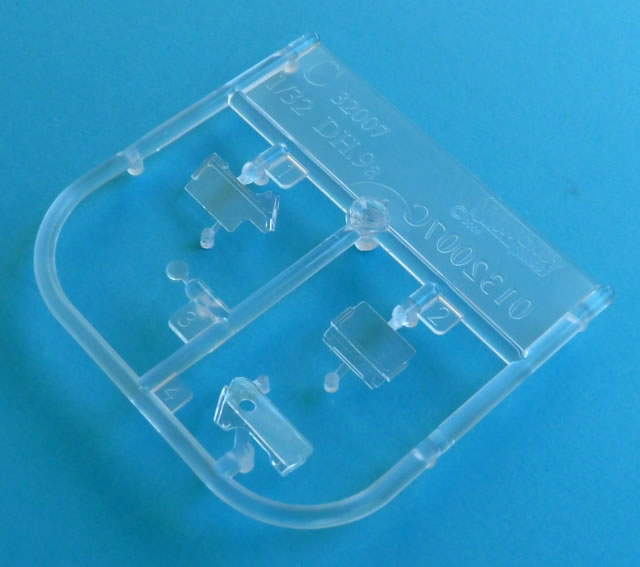
The complexity of the subject means that it will pay to study the instructions carefully. It’s easy to miss some items during the construction sequence and to add them later will be painful.
The RFC armaments sprue is a bonus for modellers. Here we find a choice of 25lb Cooper bombs, 100-112lb HERL bombs, and 230lb HE Mk.1 bombs. Naturally we also get the appropriate carriers. It all results in plenty of items for the spares box.
The modeller can also choose between a CFS Mk.4b bomb sight and the low height Mk.II bomb sight.
A rigging diagram helps explain were each wire should go and this applies to the internal control cables as well.
Marking Options
The customary 5 colour schemes are catered for and these are supplied on 2 sheets of decal material.
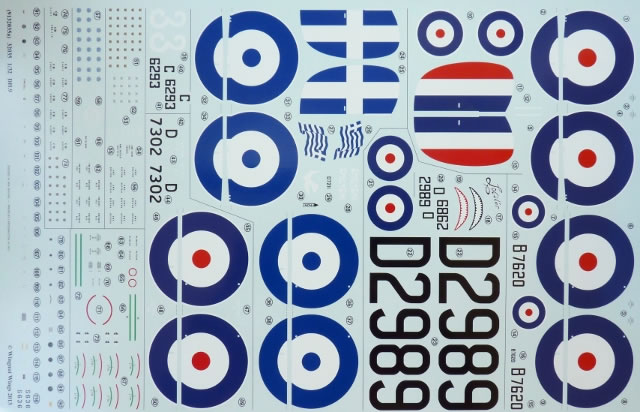
All items were printed in perfect register and are surrounded by a minimum of carrier film. Decal setting solutions can be used safely but it is wise to stay away from the stronger concoctions.
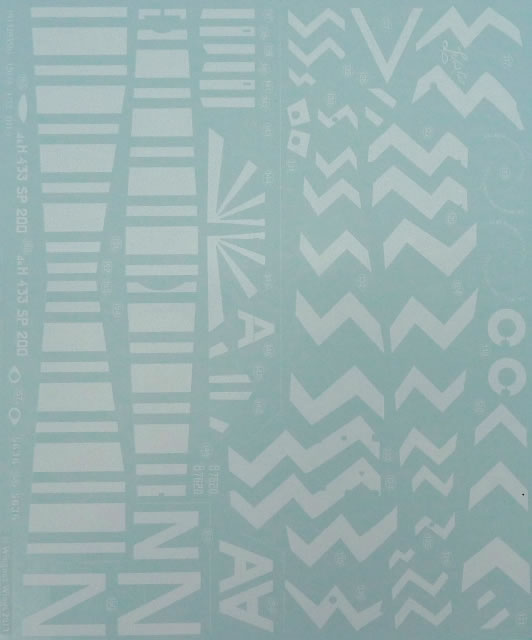
Apart from the usual roundels, and individual markings, there is also a wealth of other data including the aforementioned instrument faces, stencilling and logos.
- DH.9 B7620, JA Gray & JJ Comerford, A Flight, 211 Sqn, June 1918.
This was a Westland built aircraft that originally had been planned as a DH4. After crashing in March 1918, it was later repaired and allocated to 211 Sqn. RFC. On 27 June 1918 it was shot down by flak and subsequently purchased by the Dutch. Decals for this later livery have also been supplied.
- DH.9 C6293 “3”, 144 Sqn, August 1918.
The DH9 replaced 144 Sqn’s aging BE2e and BE12 aircraft in August 1918. This AMC built machine joined the squadron that same month and saw action against the Turks until the Armistice with Turkey on 30 October 1918.
- DH.9 D2989, “Lobster”, 49 TDS, February 1919.
If you want a colourful DH9, then head off to a Training Depot Squadron. With a name like “Lobster” on the nose, it can be safely assumed that the “zig-zag” design displayed here is in red and white. Photos show that it can be portrayed with or without its Vickers machine gun.
- DH.9 D7211, “Spetsai”, HNAS, 1918.
Another Westland built machine, this DH9 served with the Greek Government HNAS (Hellenic Naval Air Service). The Greek flag on the side of the fuselage suggests that blue was also used for the burst of colour on the undersurfaces of the lower wing.
- DH.9 D7302, “N” RSS Ingram & AW Wyncoll, C Flight, 108 Sqn August 1918
The final choice is a Berwick built DH9 that was delivered to 108 Sqn in the middle of 1918. Ingram and Wyncoll were hit by flak in this aircraft while on a bombing mission on 18 August. They were made POWs after being forced to land on a beach at Oostende.
It is easy to run out of superlatives for these kits. The professionalism directed towards the product is evident as soon as one views the packaging.
Everything is included to allow for an impressive replica to be built straight out of the box. The mindset used by Wingnut Wings is ease of assembly and this is evident throughout. Detail has not been compromised as a result, nor has accuracy.
It’s another quality addition to the range of British 2-seat aircraft.
Thanks to Wingnut Wings for the review sample.
Review Text and Images Copyright © 2014 by Rob Baumgartner
Page Created 27 January, 2014
Last updated
27 January, 2014
Back to HyperScale Main Page

|
